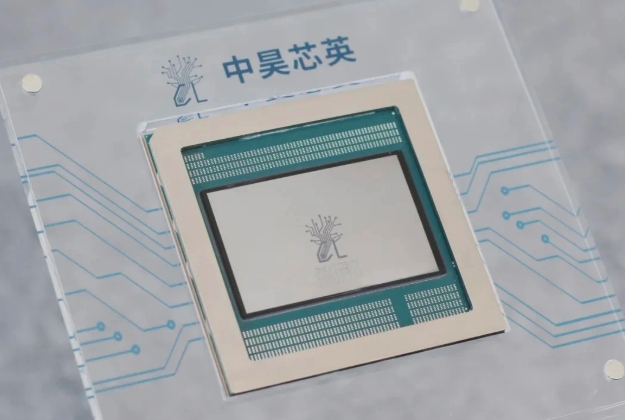1.SEMI predicts semiconductor equipment sales to hit new high in 2025, reaching $125.5 billion
SEMI pointed out in its "Mid-Year Total Semiconductor Equipment Forecast Report" that the total sales of semiconductor manufacturing equipment by global original equipment manufacturers (OEMs) are expected to hit a new record of $125.5 billion in 2025, a year-on-year increase of 7.4%. Driven by advanced logic, memory, and continuous technology migration, equipment sales are expected to climb further to $138.1 billion in 2026, achieving three consecutive years of growth.
After wafer fab equipment (WFE) reached a record $104.3 billion in 2024, the sector is projected to grow 6.2% to $110.8 billion in 2025. This figure is an upward revision from SEMI's end-2024 forecast of $107.6 billion, mainly driven by increased sales of equipment for foundry and memory applications. Looking ahead to 2026, the WFE sector is expected to grow a further 10.2% to $122.1 billion.
The backend equipment sector is expected to continue growing on the back of a strong recovery that began in 2024. After a 20.3% year-on-year increase in 2024, semiconductor test equipment sales are projected to rise a further 23.2% in 2025 to a record $9.3 billion. Packaging equipment sales grew 25.4% in 2024 and are expected to increase another 7.7% in 2025 to $5.4 billion. In 2026, the backend equipment sector will maintain its expansion momentum, with test equipment sales projected to grow 5.0% and packaging equipment sales 15.0%, achieving three consecutive years of growth.
By region, mainland China, South Korea, and Taiwan, China are expected to remain the top three in equipment spending through 2026. Mainland China will continue to lead all regions during the forecast period, though sales are expected to decline from a record $49.5 billion in 2024. All regions except Europe are projected to see significant increases in equipment spending starting in 2025. However, escalating trade policy risks could impact growth rates across regions.
2.Institution: Blackwell expected to account for over 80% of NVIDIA's high-end GPU shipments in 2025
According to the latest survey by TrendForce, the overall server market has stabilized recently, and major ODM manufacturers have shifted their focus to the development of AI servers. Starting from the second quarter, NVIDIA's Blackwell new platform products, such as GB200 Rack and HGX B200, have gradually expanded production scale, while the newer B300 and GB300 series have entered the sample verification stage.
TrendForce estimates that Blackwell GPUs will account for more than 80% of NVIDIA's high-end GPU shipments this year.
TrendForce stated that Oracle, a leading North American cloud service provider, is expanding its AI data centers, which not only brings order growth to Foxconn but also benefits manufacturers such as Super Micro Computer and Quanta. It is expected that Super Micro Computer's main growth driver this year will come from AI servers, and it has recently successfully secured some GB200 Rack projects. Quanta, relying on its deep cooperative relationships with major clients such as Meta, AWS, and Google, has successfully expanded its GB200/GB300 Rack business. Coupled with winning Oracle orders, it has performed strongly in the AI server field recently. Wiwynn continues to deepen its cooperation with Meta and Microsoft, which is expected to drive its performance growth in the second half of this year. The company focuses on ASIC AI servers and has now become a major supplier of AWS Trainium AI models.
3.Weak demand leads to 2.4% YoY decline in China's smartphone market shipments in Q2
On July 22, market research firm Counterpoint Research pointed out in a report that China's smartphone market shipments declined 2.4% year-on-year in the second quarter of 2025.
In terms of manufacturer rankings, Huawei maintained its leading position for the second consecutive quarter, with its shipment share rising from 15% in the same period last year to 18.1%. The year-on-year growth was mainly driven by the strong performance of Huawei's mid-range Nova 14 series and significant discounts on its high-end models. Benefiting from the strong performance of mid-to-low-end models, vivo ranked second in market share this quarter. OPPO launched the Reno 14 shortly before the "6·18" shopping festival, continuing the strong sales momentum of the Reno 13, and the smartphone manufacturer ranked third in shipments this quarter. Xiaomi was the second fastest-growing brand in the second quarter of 2025, ranking fifth with a 15.7% market share. Despite not launching new mid-range products during the promotion period, Xiaomi maintained growth by reducing prices of popular models such as the Redmi K80 and Xiaomi 15. Apple and Honor ranked fourth and fifth with 14.4% and 12.8% market shares, respectively.
Looking ahead to the second quarter, the institution expects the market to achieve year-on-year growth in 2025, but the growth rate will narrow. Summer promotional activities, coupled with the early launch of new flagship models in the third quarter of 2025, are expected to boost sales and lay a solid foundation for a strong market performance in the fourth quarter of 2025.
4.India's smartphone shipments grow 7% in Q2, with vivo leading at 8.1 million units
Canalys (now part of Omdia) latest data shows that India's smartphone shipments reached 39 million units in the second quarter of 2025, a 7% year-on-year increase.
Canalys pointed out that this growth is mainly attributed to the concentrated launch of new products by manufacturers in the second quarter, following a conservative strategy by manufacturers in the first quarter due to high inventory levels.
In terms of different brands, vivo (excluding iQOO) ranked first with 8.1 million units shipped and a 21% market share. Samsung ranked second with 6.2 million units and a 16% market share. OPPO (excluding OnePlus) shipped 5 million units, edging out Xiaomi, which also shipped 5 million units, to rise to third place. realme ranked fifth with 3.6 million units shipped.

5.Global PC shipments grow 8.4% YoY in Q2, with Lenovo maintaining leadership
Recently, market research firm Counterpoint Research stated in a report that global PC shipments grew 8.4% year-on-year in the second quarter of 2025, hitting the highest year-on-year growth rate since 2022, when pandemic-driven demand boosted the market. Growth in the second quarter was mainly driven by the upcoming end-of-life of Windows 10, early adoption of AI PCs, and stronger commercial demand from pre-quarter inventory builds and tariff-related pull-forward measures to meet upcoming back-to-school demand.
In terms of manufacturer rankings, Lenovo maintained its leading position this quarter, accounting for approximately 25% of total shipments, driven by pre-tariff inventory adjustments, the Windows 10 replacement cycle, and initial demand for AI PCs. HP and Dell followed closely, with stable enterprise demand but facing pressure from aggressive pricing by smaller OEMs. Apple's MacBook sales remained steady, supported by updated M4 series models.
Global PC manufacturing remains highly concentrated in China, continuing to pose significant challenges for the industry, particularly in managing tariff-related risks. While recent developments in U.S. trade policy, such as the temporary suspension of laptop tariffs, have alleviated some pressure, uncertainty remains. Additionally, the U.S. government's announcement of new tariffs on semiconductor components and other technology products, expected to take effect in the coming months, has further heightened industry concerns.
6.China's AI industry scale exceeded 700 billion yuan in 2024
On the 21st, the China Internet Network Information Center (CNNIC) released the 56th "Statistical Report on Internet Development in China" in Beijing. The report shows that China's artificial intelligence industry scale exceeded 700 billion yuan in 2024, maintaining a growth rate of over 20% for many consecutive years.
The report also pointed out that in the first half of this year, China's generative artificial intelligence products achieved all-round progress from technology to application, with a rapid increase in the number of products and continuous expansion of application scenarios.
On the one hand, China's influence in the field of artificial intelligence has significantly increased. According to the report, as of March this year, a total of 346 generative artificial intelligence services have completed filing with the Cyberspace Administration of China. The emergence of Chinese AI products has attracted global attention. DeepSeek surpassed 30 million daily active users worldwide within 20 days of its launch, topping app stores in 140 countries and regions, becoming the fastest-growing generative AI application globally.
On the other hand, generative artificial intelligence technology continues to penetrate into specific application scenarios. The report shows that as of June this year, the proportion of users using generative AI products to answer questions was the highest, reaching 80.9%. Domestic AI products have not only made breakthroughs in trillion-parameter scale and multimodal capabilities but also deeply integrated with scenarios such as office collaboration, educational inclusion, industrial design, and content creation, building an intelligent application ecosystem covering multiple fields.
7.19 automakers listed in Fortune China 500, with Seres and XPeng rising over 100 places
On July 22, the 2025 Fortune China 500 list was officially released, with 19 automakers included, among which several companies saw significant ranking improvements, with new energy vehicle companies performing particularly prominently.
Among traditional automakers, BYD jumped from 40th last year to 27th, further enhancing its leading effect. Geely Group rose from 54th last year to 41st, demonstrating its strong competitiveness in the market. Chery Group made significant progress, rising from 100th last year to 59th. SAIC Motor ranked 38th, continuing to stay at the forefront of the industry. BAIC Group steadily improved from 57th last year to 52nd. Great Wall Motor ranked 140th, showing stable performance. Seres Group soared from 404th last year to 169th, a significant jump of 235 places.
GAC Group ranked 66th, China FAW 43rd, Dongfeng Motor Group 73rd, China National Heavy Duty Truck 209th, Jianghuai Automobile 344th, Yutong Bus 375th, and Jiangling Motors 367th.
Among new car-making forces, Li Auto ranked 171st, jumping 13 places from last year. NIO ranked 269th, up 43 places from last year. XPeng Motors ranked 351st, a significant jump of 101 places from last year. Leapmotor entered the list for the first time, ranking 423rd, just behind its former shareholder Dahua Technology at 422nd. Xiaomi Group ranked 76th, becoming a representative of cross-industry car-making.
8.Winner-takes-all in AI chip market, top 5% of semiconductor companies sweep $159 billion in profits
According to a July 20 report from global consulting firm McKinsey, the top 5% of semiconductor companies (by annual sales), including NVIDIA, TSMC, and Broadcom, captured all the profits generated by the industry in 2024.
The top 5% of semiconductor companies achieved economic profits of $159 billion, while the middle 90% earned only $5 billion. The bottom 5% actually incurred losses of $37 billion. In fact, the top 5% of semiconductor companies outperformed the entire semiconductor market's economic profit of $147 billion.
This market shift took only 2-3 years. During the COVID-19 pandemic (2021-2022), the middle 90% of companies earned more than $30 billion in annual economic profits, translating to an average profit of approximately $130 million per company. However, with the rise of the artificial intelligence (AI) semiconductor boom in 2023, these companies' average profits plummeted to $38 million. In 2024, profits further dropped to $17 million, an 88% decline over two years.
McKinsey predicts that by 2030, semiconductor companies in the AI industry chain will achieve an annual growth rate of 18%-29%, while traditional semiconductor companies not directly related to AI will only see 2%-3% annual growth. McKinsey analyzed: "While a few companies have achieved unprecedented profit levels amid the AI value creation boom, the reality for most companies is very different."










